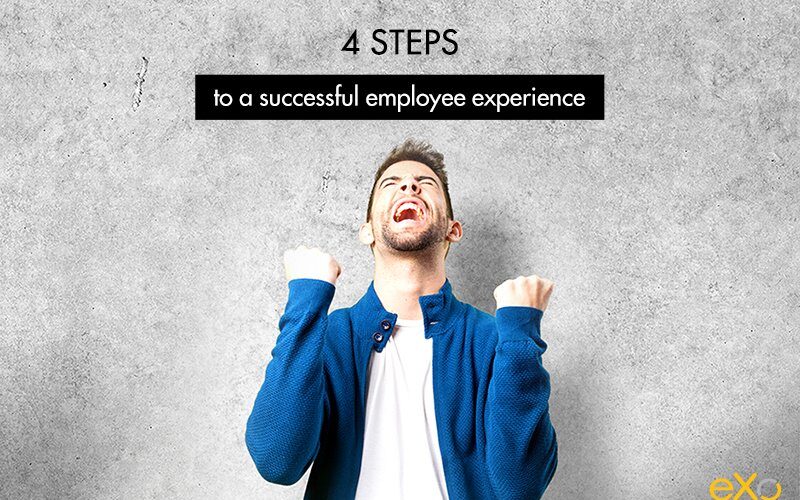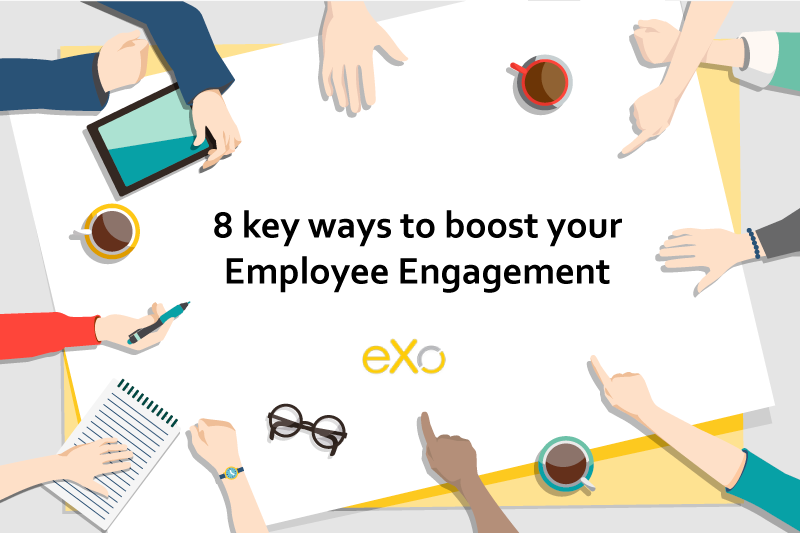- Veronika Mazour
- June 1, 2017
How to improve your employee experience in four steps
Here is the second in our series of blog posts covering the employee experience.
In our previous post, we drew a parallel between employee experience and customer experience.

Content
As with customer experience, it helps to start by identifying all touchpoints where an employee comes in contact with your organization and mapping your employee experience.
When you do that, you automatically identify issues and areas of possible improvement. But how can you actually enhance employee experience and make a difference?
We will use the same methods that have been proven to work with customer experience.
Depuis l’apparition de ces termes il y a une dizaine d’année, les concepts sous-jacents n’ont eu de cesse d’évoluer et on peut trouver autant de définitions que d’avis.
1. Put on your empathy hat
Employee experience requires us to put employees and their needs first. Naturally, empathy is the backbone of any successful employee experience.
If your top managers, middle managers and employees all took action while empathizing with their colleagues or subordinates, your employee experience would magically improve without any effort on your part.
On the contrary, letting your employees play table tennis in the lobby will do little to prove your social responsibility if a manager also punishes an employee for being tardy after spending the night at the hospital.
A small, isolated incident of this kind can have an amplifying effect due to the rumor mill and can generate dissatisfaction on a larger scale. Stating the importance of the employee experience is not sufficient when nothing is there to support the message in practice.
2. Aim for consistency
Consistency is necessary to any satisfying employee experience:
- What an employee is inside the organisation should be consistent with what he is to the outside world.
- Recruiting promises need to be confirmed by an employee’s first experiences with the company.
- The company’s goal and its operationalisation should go together.
- Messaging from top management should be reinforced and not contradicted by messaging from middle management.
Other large and small things can be added to that list. Just as with customer experience, employee experience needs to be consistent from the beginning.
3. Model your employee experience with design thinking
Successful customer experiences propose a whole experience, not just a product. In the same way, employee experience should be viewed as a federating concept, covering an employee’s entire range of interactions with the company.
The design thinking method is commonly used to reinvent customer experience, and it adapts perfectly to employee experience. The core concept of this method is to put the user (employee) at the heart of the process.
Start by empathizing with and understanding all employees, whatever their role is, and represent and feel their needs, desires and expectations.
Then define what services/solutions you as an employer can offer the employee and for what cost/value. That is where ideas will emerge and flow from.
The best way to achieve quick results is to apply this method to the different touchpoints your employees has with your organization, such as physical and digital workplaces and organizational structure/hierarchy.
4. Agile approach, or how to introduce your employee experience
As with any ambitious project, and once again drawing inspiration from the customer experience, employee experience must be tested and improved.
Instead of spending years on ideation, theorizing and prioritizing, define your first service offering, put it in place and see how it works. By including all stakeholders early on, you increase your chances of identifying issues and quickly ensuring support.
You can also measure soft and hard metrics to illustrate your field feedback and take corrective action, thus improving your service offering gradually over each iteration.
In conclusion, do not be afraid to fail. The most important innovations often emerge from mistakes.
eXo Platform 6 Free Datasheet
Download the eXo Platform 6 Datasheet and
discover all the features and benefits
discover all the features and benefits
- Tags: Employee engagement, Tips & Tricks
5/5 - (28 votes)
I am the Chief Executive Officer of eXo Platform (the open source digital workplace platform), a company that I co-founded while in college and that I came back to after several years in the banking and consulting industry. I blog about modern work, about open-source and sovereignty issues. Occasionally, I also blog about my personal areas of interest, such as personal development, work–life balance, sustainability and gender equality.
Related posts
- All
- eXo
- Digital workplace
- Employee engagement
- Open source
- Future of work
- Internal communication
- Collaboration
- News
- intranet
- workplace
- Knowledge management
- Employee experience
- Employee productivity
- onboarding
- Employee recognition
- Change management
- Cartoon
- Digital transformation
- Infographic
- Remote work
- Industry trends
- Product News
- Thought leadership
- Tips & Tricks
- Tutorial
- Uncategorized
Leave a Reply
( Your e-mail address will not be published)



Very useful and insightful, good article Veronika.